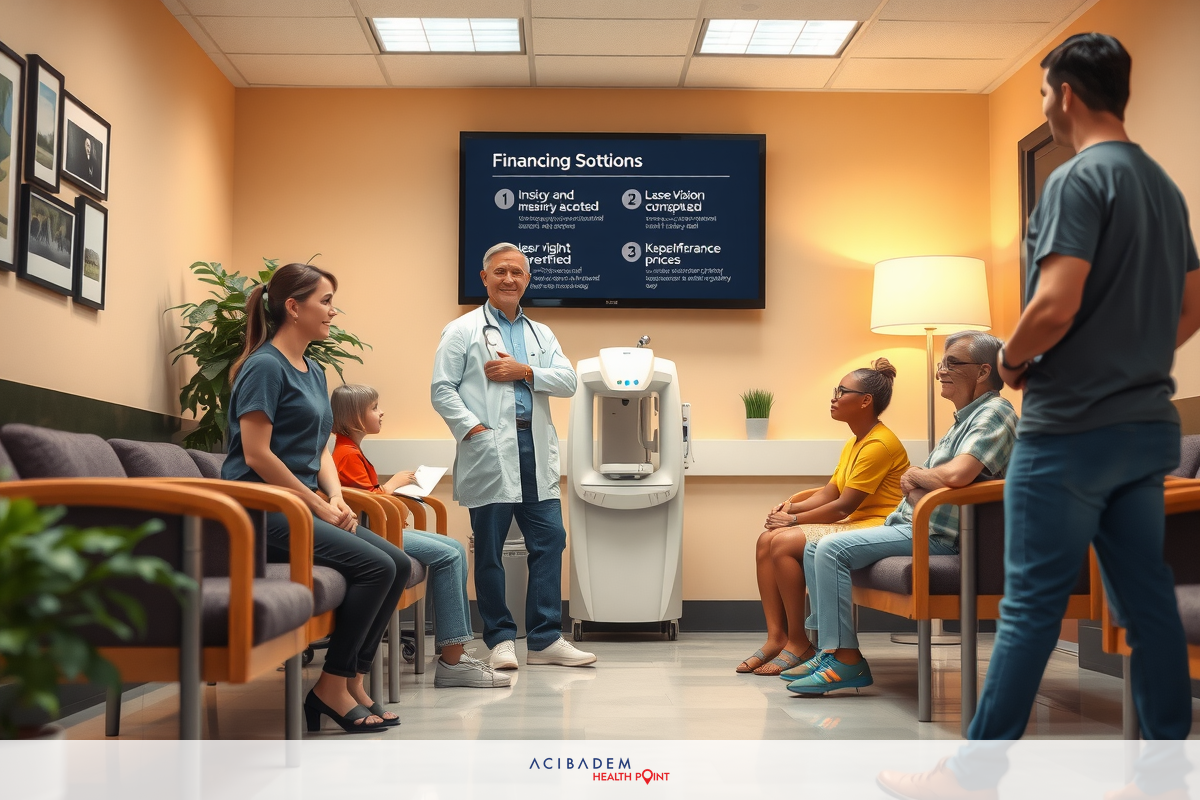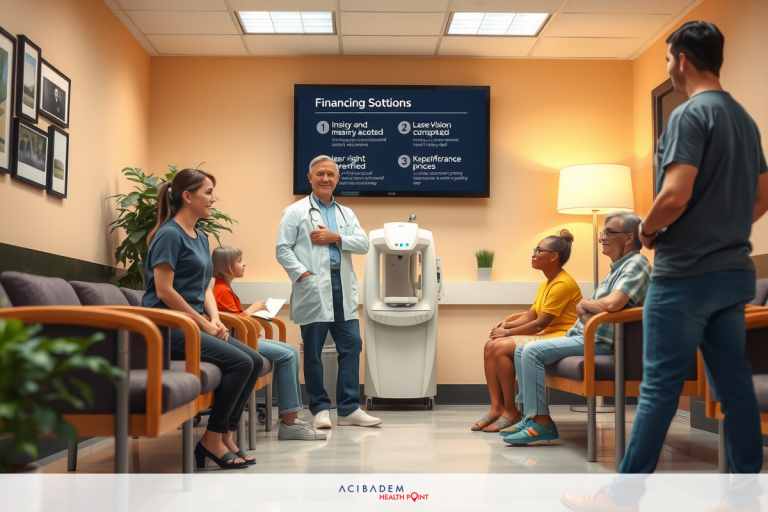How Much Is Laser Surgery for the Eyes
How Much Is Laser Surgery for the Eyes Eye health is paramount. It influences our daily lives, from simple tasks such as reading and driving to more complex activities that require keen vision. One modern solution for addressing eye issues is laser surgery—a popular choice due to its non-invasive nature and high success rate.
The cost of laser eye surgery can be a crucial factor in determining whether this option suits an individual’s needs. Prices fluctuate depending on various elements like the type of procedure, surgeon expertise, geographical location, among other factors. This article peels back layers around these costs, demystifying components by offering insights into what constitutes the overall pricing structure.
In this guide, we’ll explore various aspects of laser eye surgery, including the different types of procedures, their costs, and financing options. We’ll also emphasize the importance of considering both affordability and the quality of care when choosing a provider and procedure. Join us on this journey to understand the financial and value-related aspects of this medical advancement.
Factors Affecting the Cost
When contemplating the average cost of $1,000 to $4,000 per eye for laser eye surgery, it’s essential to recognize that this medical procedure is not uniform for all. The specific ocular health requirements of each individual can have a substantial impact on the ultimate cost. To gain a comprehensive understanding of what you might anticipate in terms of expenses for laser vision correction, we will explore some of these cost factors.
One predominant factor affecting the cost is the type of laser eye surgery performed. There are different procedures such as LASIK, PRK, LASEK and SMILE each with its own set pricing structure based on complexity and resources required. The surgeon’s expertise also plays a crucial role in determining the overall expense. Highly experienced doctors who have successfully conducted numerous operations may charge higher fees compared to less seasoned practitioners due to their extensive knowledge and proven track record.
Insurance coverage can greatly impact the financial aspects of laser eye surgery. It’s important to understand your insurance policy’s provisions and consult with both healthcare insurers and trusted ophthalmologists to find the best approach that balances costs and long-term visual benefits while maintaining overall financial and health well-being.
Types of Laser Eye Surgery
Diving into the world of laser eye surgery, it becomes evident that multiple procedures can address vision correction. Each procedure varies in its approach, recovery time, effectiveness for different vision problems and naturally cost. Gaining an understanding of these types will illuminate how they contribute to the overall dialogue on affordability.
LASIK (Laser-Assisted In Situ Keratomileusis) is a popular choice for many due to its efficiency and minimal discomfort post-surgery. It corrects vision by reshaping the cornea with a laser after creating a thin flap on its surface. Although often higher priced than other options, LASIK’s quick recovery time and success rate make it an attractive option.
PRK (Photorefractive Keratectomy), an older but still effective method predating LASIK, eliminates the need for a corneal flap by directly applying laser treatment onto the cornea’s surface instead. Its lower cost might appeal to some patients; however, longer healing times are expected compared to LASIK.
LASEK (Laser Assisted Sub-Epithelial Keratectomy) combines elements of both LASIK and PRK procedures. It involves using an alcohol solution to loosen the epithelium layer before reshaping the underlying corneal layers

with an excimer laser. After the cornea is reshaped, the loosened epithelium is repositioned. LASEK minimizes discomfort during the initial healing stages and reduces the risk of complications associated with creating flaps as in more traditional methods, making it a balanced and relatively affordable option among available treatments today.
SMILE (Small Incision Lenticule Extraction) is a relatively new advancement in laser eye surgery. It involves creating small incisions to extract lenticular tissue, reshaping corneas for vision correction. This technique is less invasive and can offer greater post-operative comfort, although it might come at a slightly higher cost due to the innovative technology involved. However, the benefits often justify the additional expense compared to older surgical methods.
Acknowledging these differences in laser eye surgery types illuminates the diverse cost structure associated with each, providing a clearer understanding of the financial commitment involved when considering vision correction through this avenue.
Financing Options
While the prospect of improved vision through laser eye surgery is enticing, it’s essential to consider how you’ll finance this investment. The cost can be a substantial financial commitment but remember, affordability doesn’t equate to cheapness; rather, it means finding a comfortable way to manage costs without compromising on quality care and successful outcomes.
Payment plans offered directly by clinics or hospitals are common options that allow patients to spread out the cost over a specified period instead of paying one lump sum upfront. These plans often come with flexible terms and might even offer interest-free periods making them an attractive choice for many individuals seeking laser eye surgery. However, before committing to such agreements, make sure you fully understand all associated fees or charges so as not be caught off guard down the line.
Medical loans present another viable alternative for financing your procedure if savings aren’t sufficient or insurance coverage is lacking in some way. These specialized loans cater specifically towards healthcare related expenses offering fixed repayment schedules at competitive interest rates compared against regular personal loans thus enabling prospective patients suitably cover their surgical costs whilst maintaining financial stability elsewhere within their budgets.
It’s clear that numerous avenues exist for managing the expense associated with obtaining better vision via lasers. By exploring all available choices and taking into account individual financial circumstances each person can find optimal solution for their unique situation. Always remember, the goal isn’t just about finding the cheapest option but rather identifying a financially sustainable plan that aligns with personal needs and long-term health objectives.
Frequently Asked Questions
What is the average cost of laser eye surgery?
The average cost typically falls within the range of $1,000 to $4,000 per eye for laser eye surgery and is influenced by various factors such as the type of procedure, the surgeon's experience, and the geographical location. Standard treatments may start at a few thousand dollars per eye, while more advanced procedures can come with significantly higher costs.
Does insurance cover laser eye surgery costs?
Insurance coverage varies depending on your specific plan. Some plans may partially or fully cover certain surgeries if they are medically necessary, while others may not cover elective procedures like most laser vision corrections. It's essential to consult with your insurer before undergoing any major medical operations to understand what is covered under your policy.
Can I use my Health Savings Account (HSA) or Flexible Spending Arrangement (FSA) funds towards paying for my procedure?
In many cases, these funds can offset surgical expenses. However, consulting with governing authorities and understanding regulations is crucial to ensure compliance and avoid penalties for misuse. Be sure to check with the relevant personnel within managing organizations to confirm eligibility and requirements before applying them to healthcare-related expenses.
The information provided here is for informational purposes only and does not constitute medical advice. It’s essential to consult healthcare professionals directly for personal health matters, especially when considering significant decisions like invasive procedures or laser-based advancements in optometry and ophthalmology.








